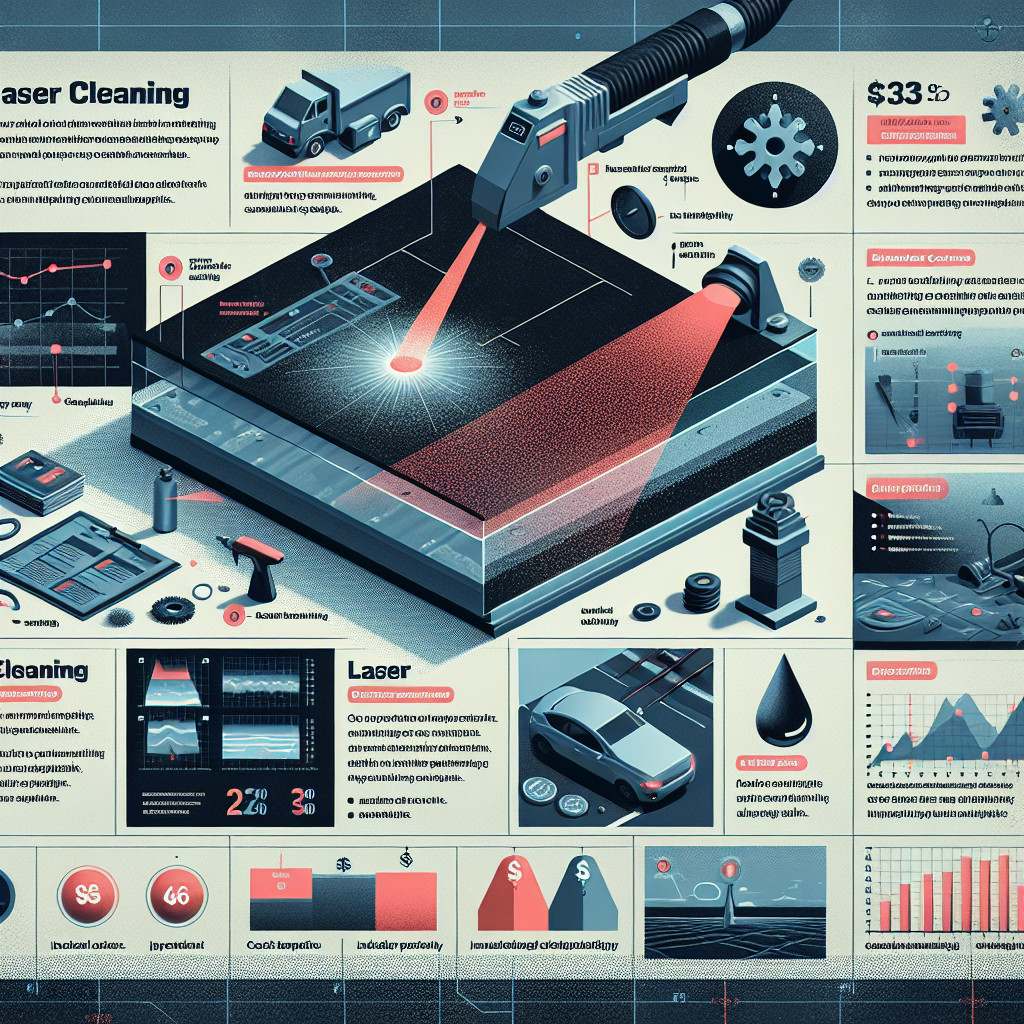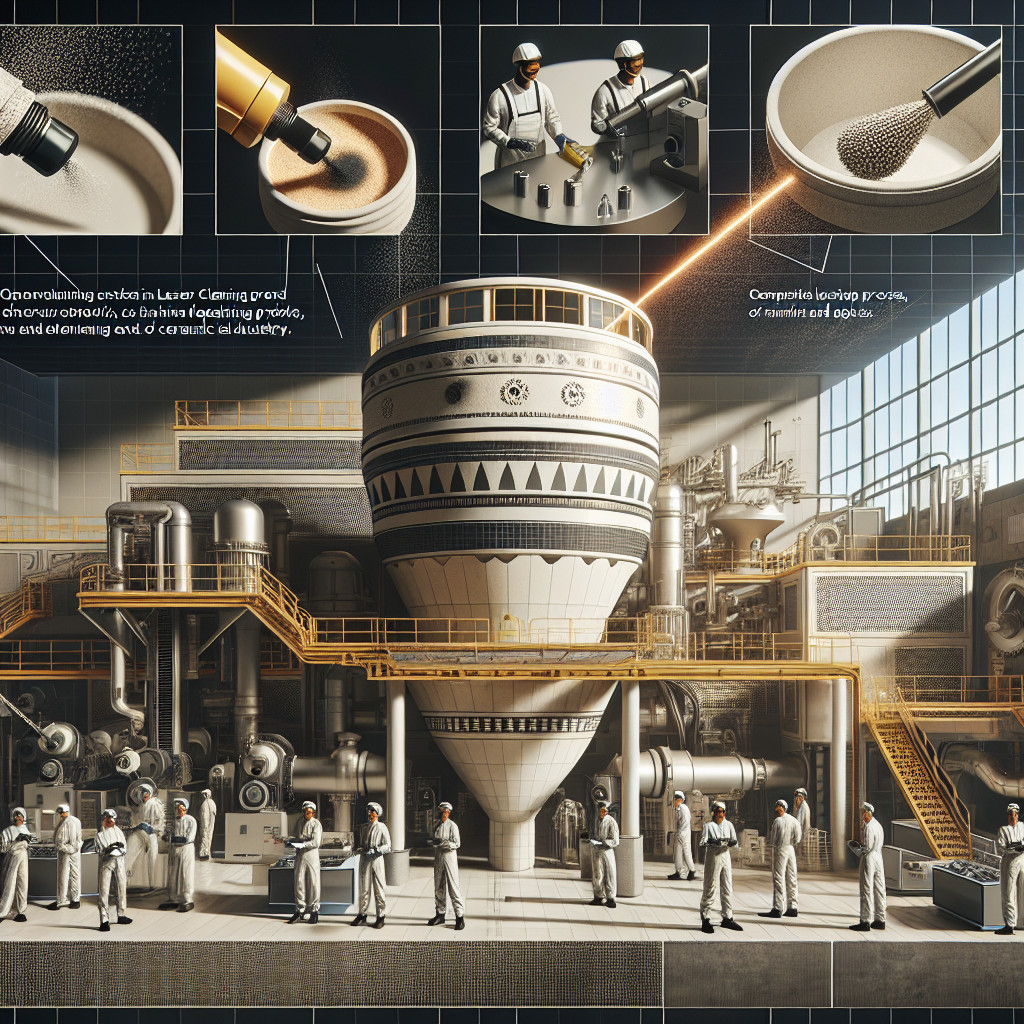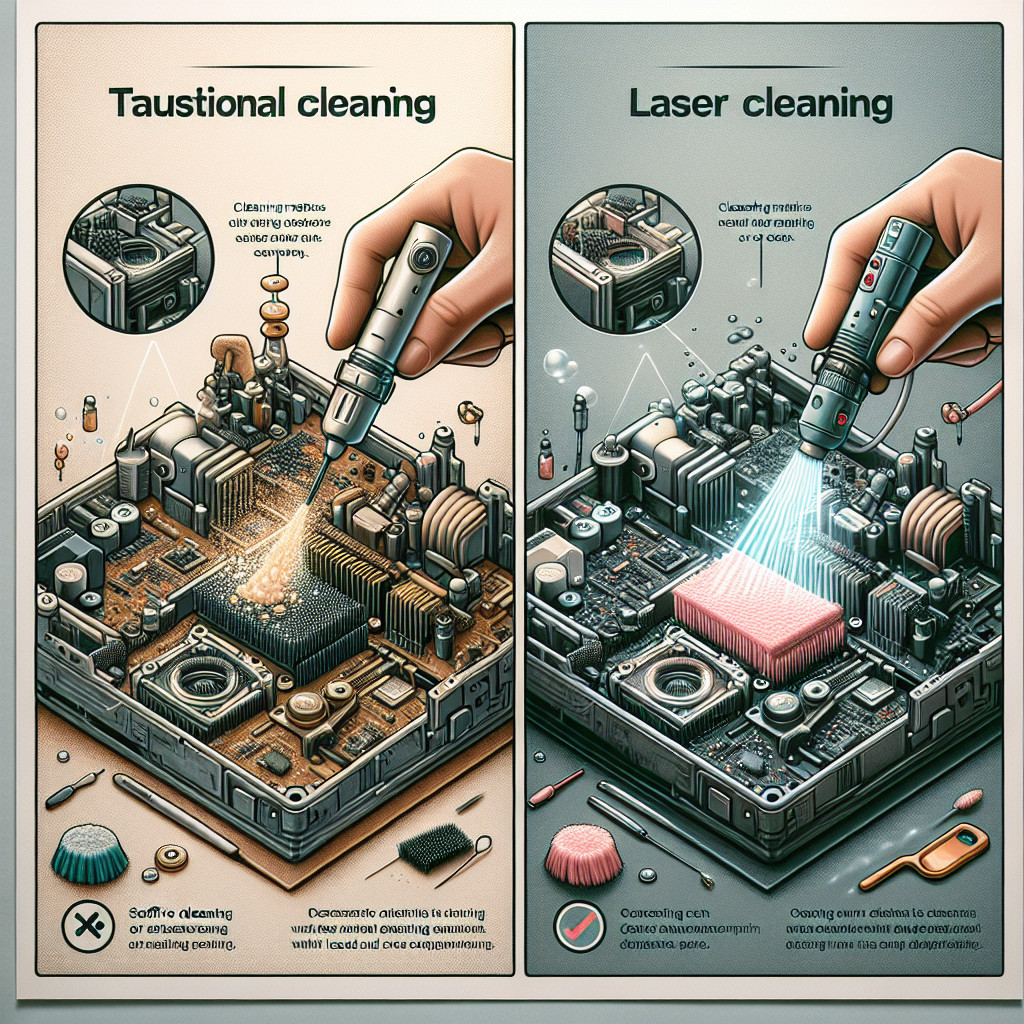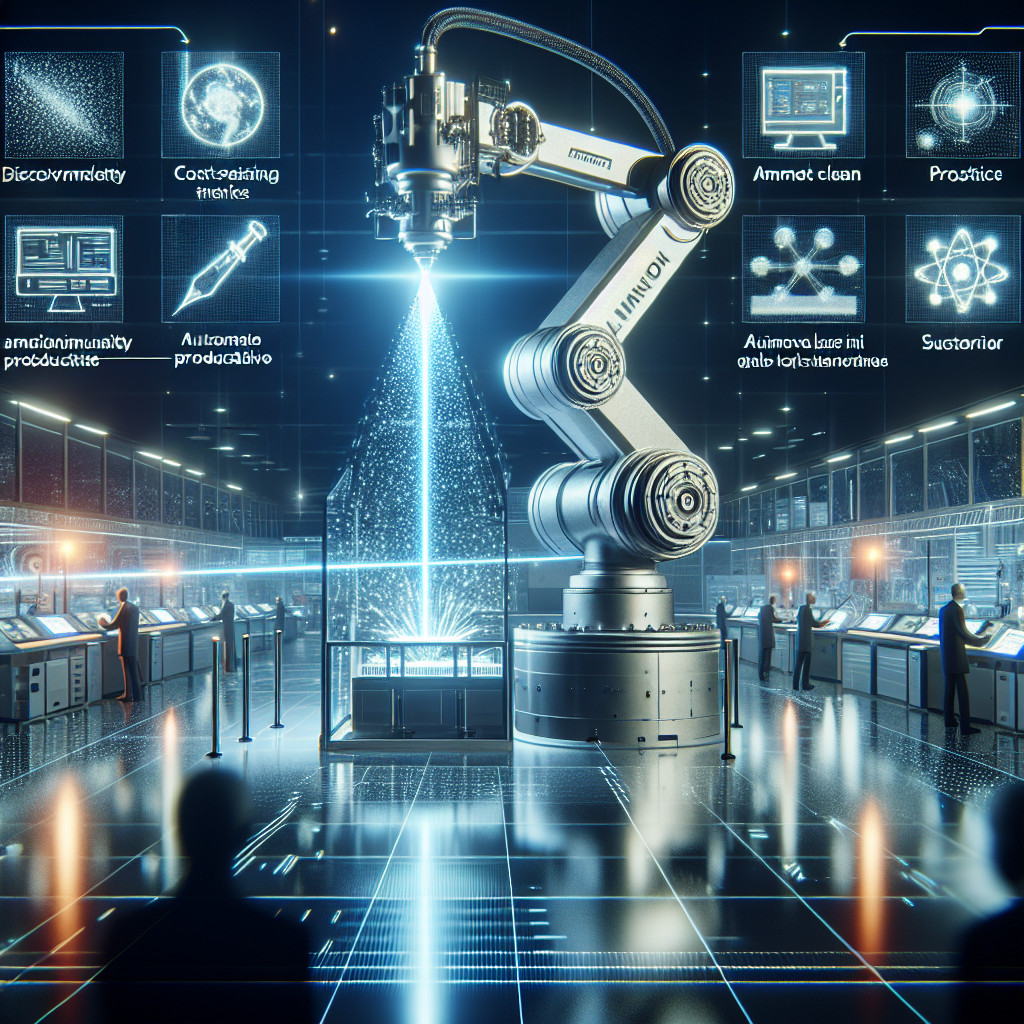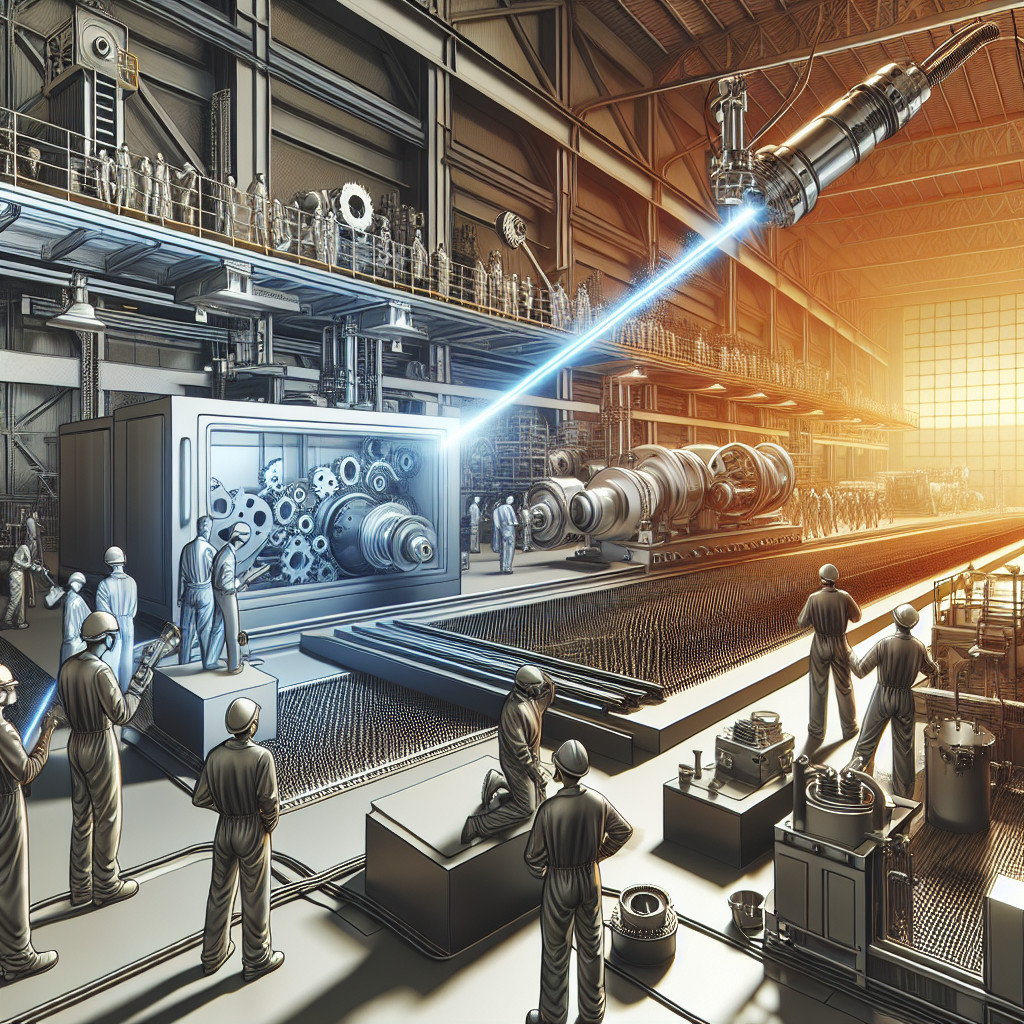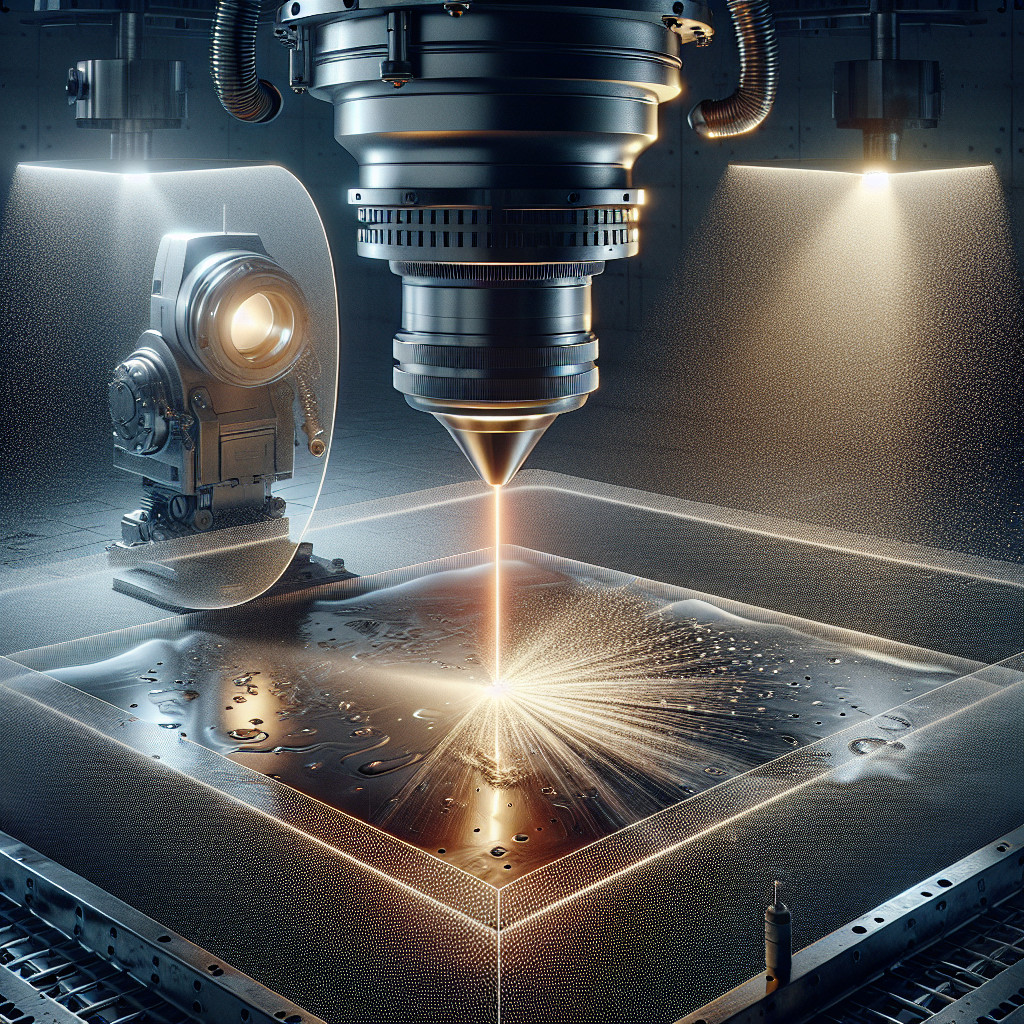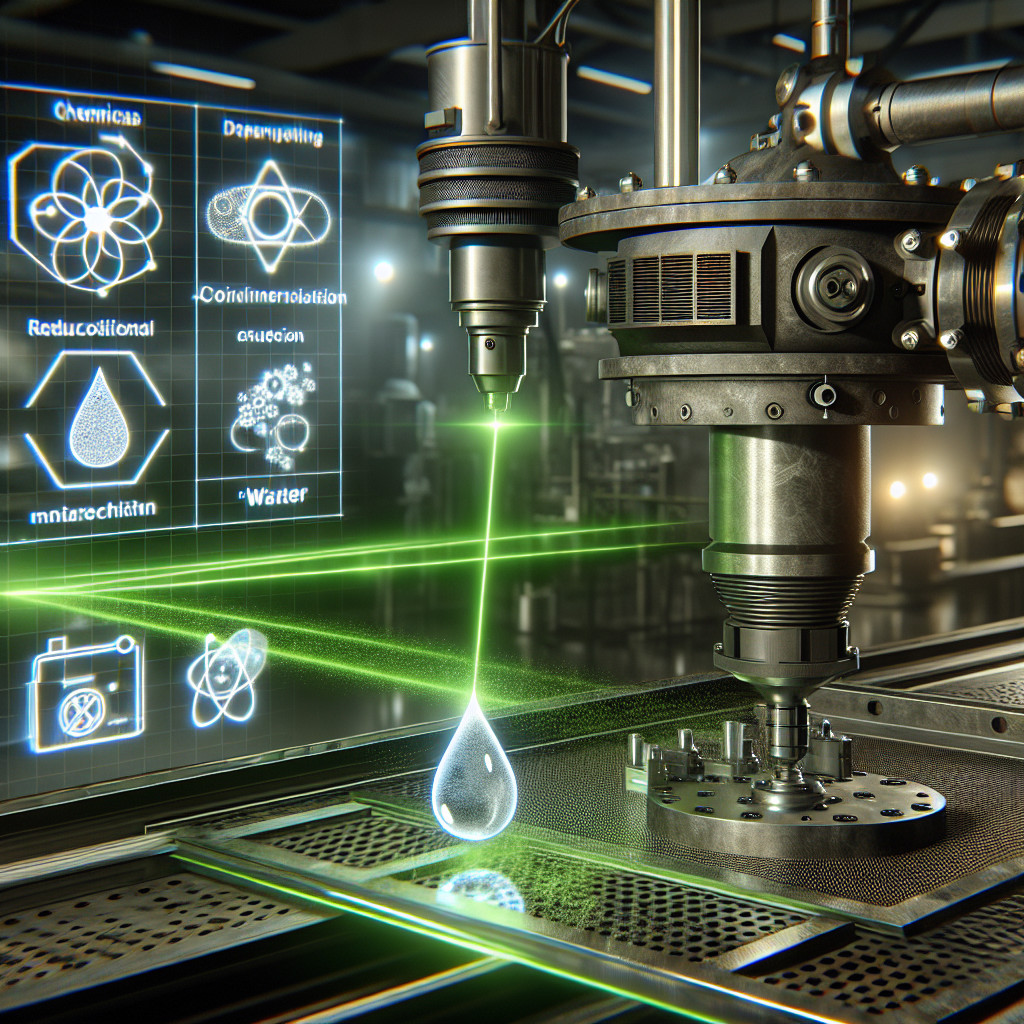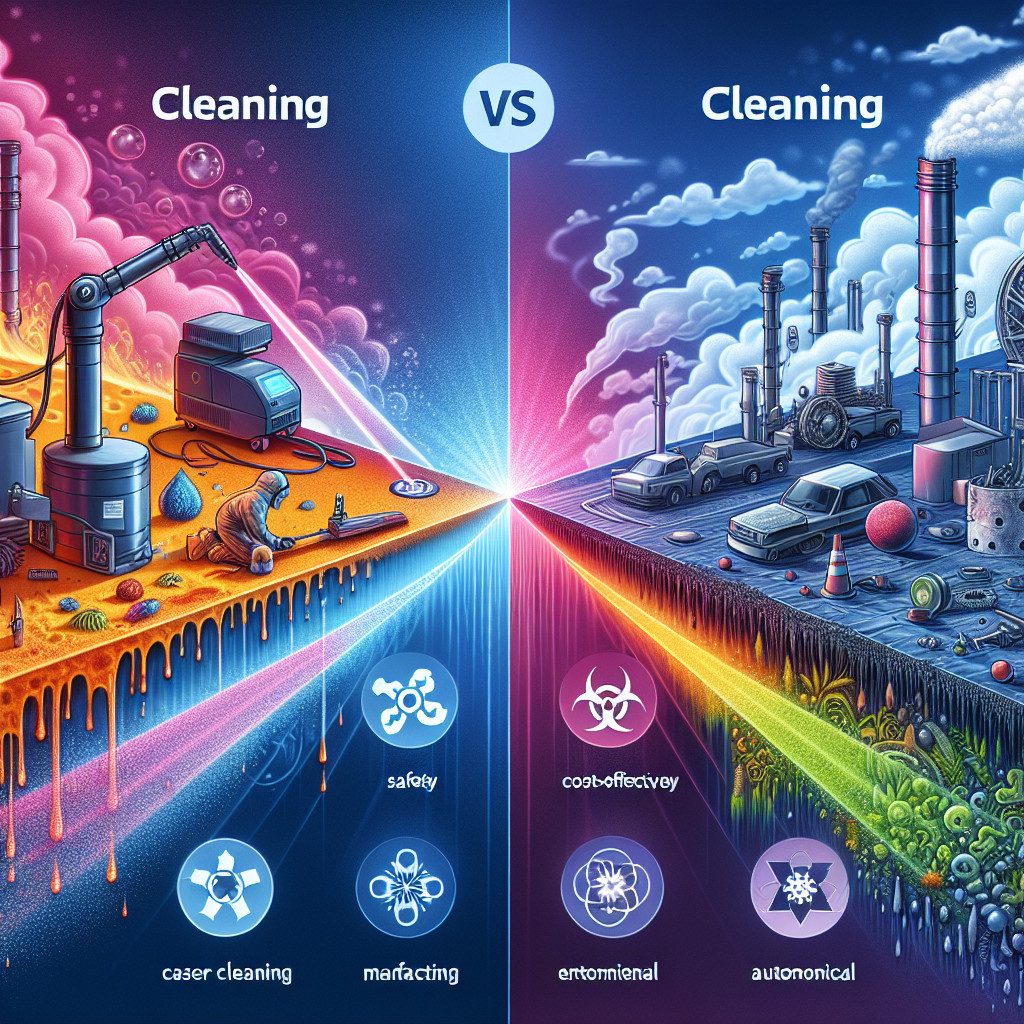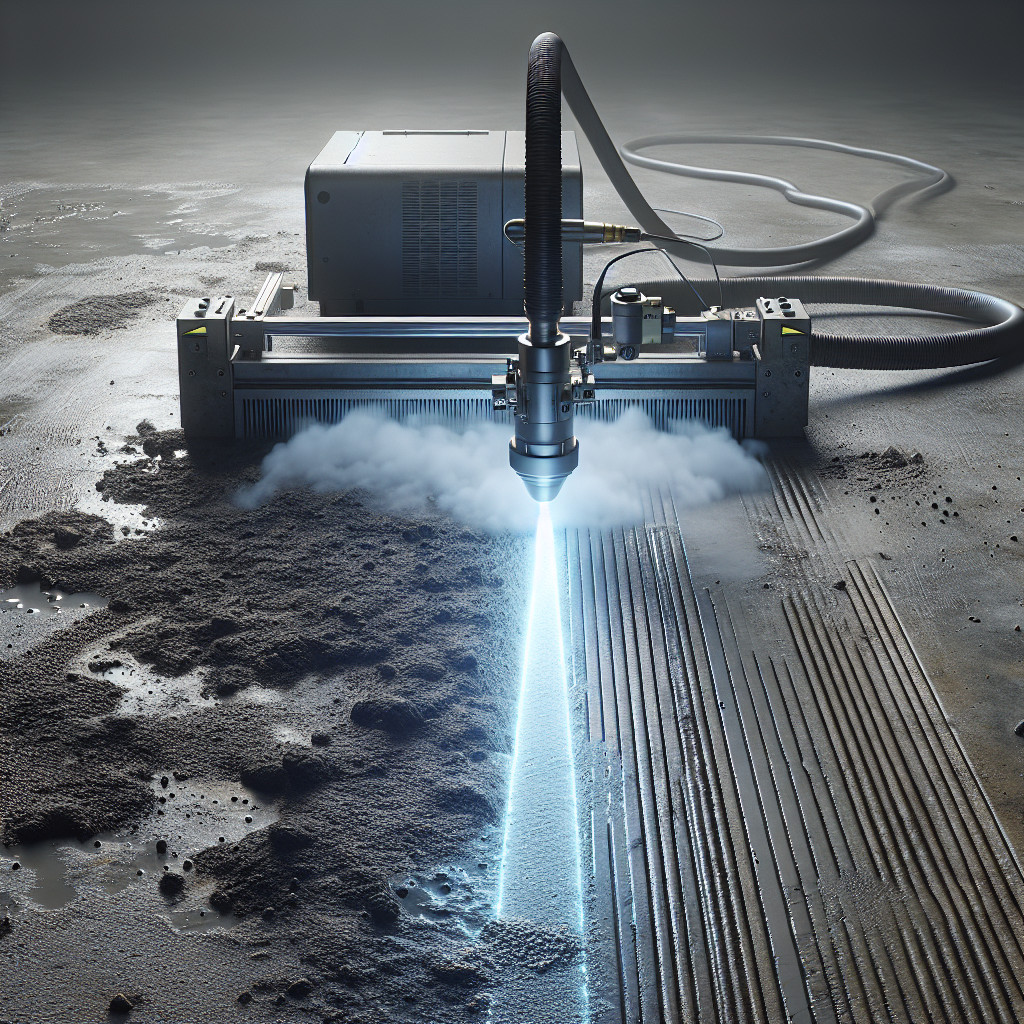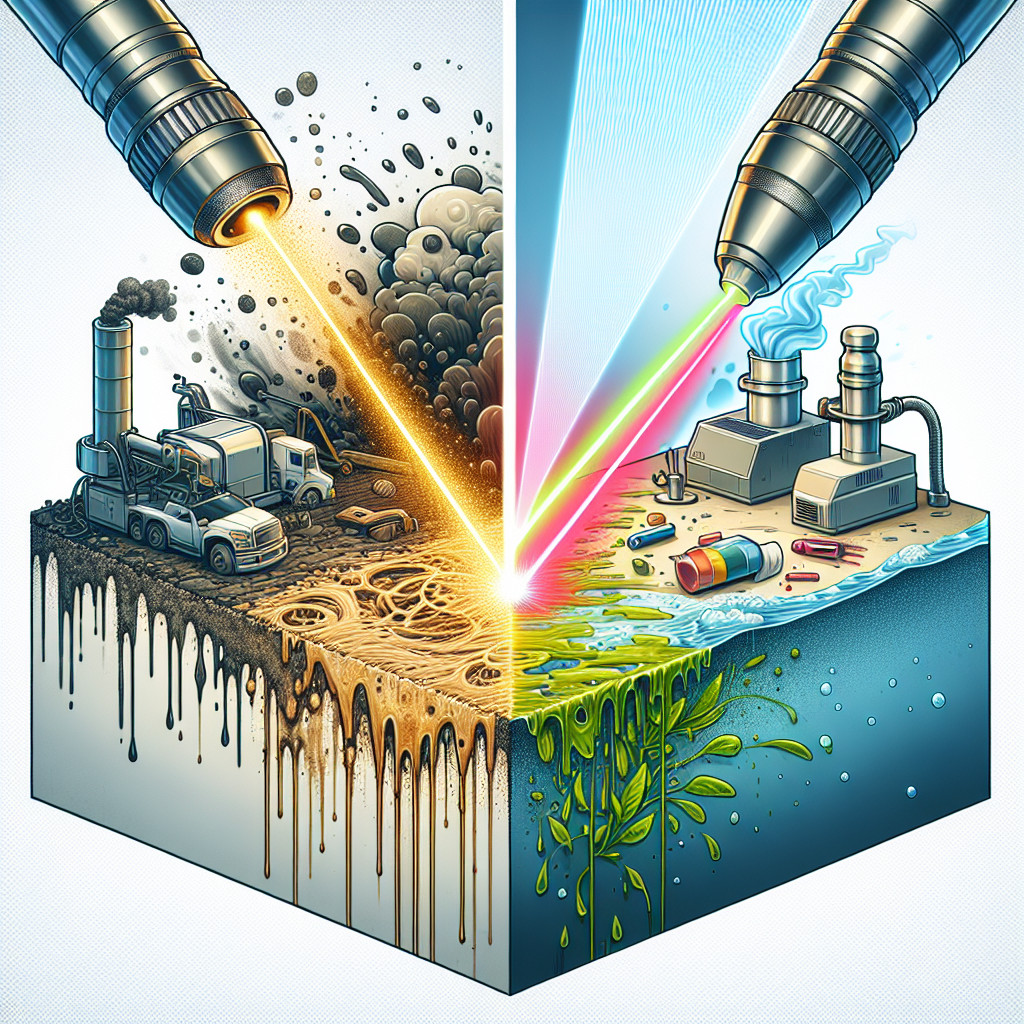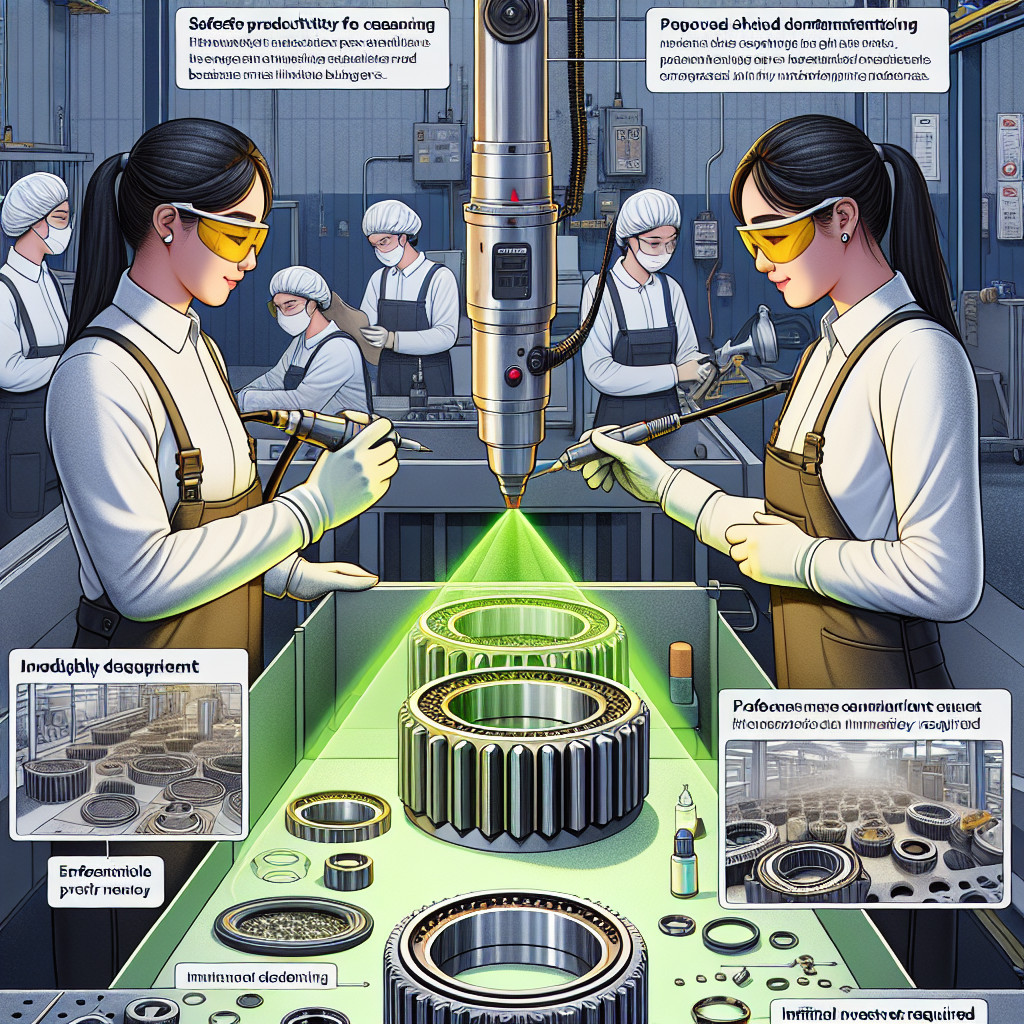- Ineffectiveness of laser cleaning on certain materials
- Limitations of laser cleaning in removing certain types of contaminants
- Challenges in controlling the intensity and focus of laser beams during cleaning
- Ineffectiveness of laser cleaning on porous materials
- Limitations of laser cleaning in removing contaminants from tight spaces or crevices
- Challenges in achieving uniform cleaning results across large surfaces using lasers
- Challenges in cleaning surfaces with low chemical resistance using lasers
- Limitations of laser cleaning in removing contaminants from surfaces with low flexibility or elasticity
Ineffectiveness of laser cleaning on certain materials
Laser cleaning has gained significant popularity in recent years as a non-contact and environmentally friendly method for removing contaminants from various surfaces. It utilizes the intense energy of laser beams to vaporize or ablate unwanted substances, leaving the underlying material clean and undamaged. However, despite its numerous advantages, laser cleaning is not equally effective on all materials. Certain materials pose challenges that limit the efficiency and effectiveness of this cleaning technique. This article aims to explore the reasons behind the and discuss potential solutions.
1. Metals:
Laser cleaning is generally effective on metals due to their high thermal conductivity and reflectivity. However, certain metals, such as aluminum and copper, exhibit poor response to laser cleaning. This is primarily because these metals have high reflectivity, which prevents the laser beam from effectively reaching the surface and interacting with the contaminants. Additionally, the high thermal conductivity of metals causes rapid heat dissipation, reducing the effectiveness of laser cleaning.
2. Organic Materials:
Organic materials, including wood, textiles, and paper, often prove challenging for laser cleaning. The organic compounds present in these materials have low absorption coefficients for laser wavelengths commonly used in cleaning processes. As a result, the laser energy is not efficiently absorbed, leading to ineffective cleaning. Moreover, organic materials are prone to thermal damage when exposed to high-intensity laser beams, further limiting the effectiveness of laser cleaning.
3. Delicate Surfaces:
Laser cleaning can be detrimental to delicate surfaces, such as fragile artworks, historical artifacts, and sensitive electronic components. The high energy density of laser beams can cause surface ablation or even structural damage. Additionally, the cleaning process may alter the surface texture or remove thin layers of protective coatings, compromising the integrity and aesthetics of the material.
4. Transparent Materials:
Transparent materials, like glass and certain plastics, are not suitable for laser cleaning. These materials have low absorption coefficients for laser wavelengths commonly used in cleaning processes, resulting in minimal interaction between the laser beam and the contaminants. Moreover, the high transparency of these materials allows the laser energy to pass through without significant absorption, rendering laser cleaning ineffective.
5. Surface Contaminants:
The effectiveness of laser cleaning heavily depends on the nature and composition of the contaminants present on the surface. Some contaminants, such as rust or heavy oxides, require higher laser energy levels for effective removal. However, excessive laser energy can lead to surface damage or material alteration. Additionally, certain contaminants may have strong adhesion to the surface, making it difficult for the laser beam to dislodge them effectively.
Potential Solutions:
1. Adjusting Laser Parameters:
Modifying laser parameters, such as wavelength, pulse duration, and energy density, can enhance the effectiveness of laser cleaning on certain materials. By selecting appropriate parameters, it is possible to optimize the laser-material interaction and improve cleaning efficiency.
2. Combination Techniques:
In cases where laser cleaning alone is ineffective, combining it with other cleaning techniques can yield better results. For example, pre-treatment with solvents or mechanical methods can help loosen contaminants, making them more susceptible to laser ablation.
3. Material-Specific Approaches:
Developing material-specific laser cleaning techniques can address the challenges posed by certain materials. By understanding the unique properties and characteristics of these materials, tailored laser cleaning methods can be designed to maximize effectiveness while minimizing potential damage.
Keywords: laser cleaning, effectiveness, materials, metals, organic materials, delicate surfaces, transparent materials, surface contaminants.
Long-tail phrases:
1. Ineffectiveness of laser cleaning on aluminum and copper surfaces.
2. Challenges of laser cleaning on organic materials.
3. Limitations of laser cleaning on delicate surfaces.
4. Laser cleaning inefficiency on transparent materials.
5. Factors affecting the effectiveness of laser cleaning on surface contaminants.
Limitations of laser cleaning in removing certain types of contaminants
Another limitation of laser cleaning is its limited effectiveness in removing certain inorganic contaminants, such as rust or corrosion. While laser cleaning can effectively remove loose or superficial rust, it may struggle to remove deeply embedded rust or corrosion layers. This is because the laser energy may not be able to reach the underlying layers due to their high absorption or reflection properties. In such cases, pre-treatment methods, such as sandblasting or chemical treatments, may be necessary to remove the bulk of the rust or corrosion before laser cleaning can be applied.
Laser cleaning also has limitations when it comes to removing contaminants from porous or rough surfaces. Porous materials, such as wood or concrete, can absorb laser energy, making it difficult to achieve complete cleaning. Similarly, rough surfaces can scatter the laser beam, reducing its effectiveness in removing contaminants. In these cases, alternative cleaning methods, such as pressure washing or abrasive blasting, may be more suitable for achieving thorough cleaning.
Furthermore, laser cleaning may not be suitable for removing contaminants from heat-sensitive materials. Some materials, such as certain plastics or delicate artworks, can be damaged or deformed when exposed to high-intensity laser beams. In such cases, alternative cleaning methods, such as chemical cleaning or gentle mechanical methods, should be considered to avoid any potential damage.
Despite these limitations, laser cleaning remains a valuable tool for the removal of many types of contaminants. Its non-contact nature and precise control make it ideal for delicate or intricate surfaces where traditional cleaning methods may cause damage. Additionally, advancements in laser technology, such as the development of shorter pulse durations or wavelength tuning, may help overcome some of the current limitations and expand the range of contaminants that can be effectively removed.
In conclusion, while laser cleaning offers numerous advantages in the removal of contaminants, it also has its limitations. Organic contaminants, deeply embedded rust or corrosion, porous or rough surfaces, and heat-sensitive materials pose challenges for laser cleaning. However, by combining laser cleaning with other cleaning methods or exploring alternative approaches, these limitations can be overcome. As technology continues to evolve, the limitations of laser cleaning are likely to diminish, making it an even more versatile and effective cleaning technique.
Keywords: laser cleaning, limitations, contaminants, organic, inorganic, rust, corrosion, porous surfaces, rough surfaces, heat-sensitive materials, alternative cleaning methods, technology.
Long-tail phrases:
– Limitations of laser cleaning in removing organic contaminants
– Challenges of laser cleaning in removing deeply embedded rust or corrosion
– Laser cleaning on porous or rough surfaces
– Laser cleaning and its impact on heat-sensitive materials
– Combining laser cleaning with other cleaning methods
– Advancements in laser technology for overcoming limitations in cleaning
Challenges in controlling the intensity and focus of laser beams during cleaning
1. Wpływ czynników zewnętrznych na intensywność i skupienie wiązki laserowej:
Podczas czyszczenia laserowego wiele czynników zewnętrznych może wpływać na intensywność i skupienie wiązki laserowej. Na przykład, zmiany temperatury otoczenia mogą wpływać na optykę lasera, co prowadzi do zmiany intensywności wiązki. Ponadto, obecność pyłu, wilgoci lub innych zanieczyszczeń na powierzchni może wpływać na skupienie wiązki, co utrudnia precyzyjne czyszczenie.
2. Problem rozpraszania wiązki laserowej:
Rozpraszanie wiązki laserowej jest jednym z głównych problemów podczas czyszczenia. Gdy wiązka laserowa pada na powierzchnię, może ulec rozproszeniu na skutek odbicia od niej. To zjawisko prowadzi do utraty intensywności wiązki i utrudnia skupienie jej na konkretnym obszarze. Rozwiązaniem tego problemu może być zastosowanie odpowiednich soczewek optycznych lub innych narzędzi optycznych, które pomogą skupić wiązkę na powierzchni.
3. Kontrola głębokości czyszczenia:
Kontrolowanie głębokości czyszczenia jest kolejnym wyzwaniem podczas pracy z laserem. Zbyt duża intensywność wiązki może prowadzić do uszkodzenia powierzchni, podczas gdy zbyt mała intensywność może nie być wystarczająco skuteczna w usuwaniu zanieczyszczeń. Odpowiednie dostosowanie parametrów lasera, takich jak moc, czas naświetlania i skupienie, jest niezbędne do osiągnięcia pożądanej głębokości czyszczenia.
4. Bezpieczeństwo operatora:
Praca z laserem wymaga zachowania odpowiednich środków ostrożności, aby zapewnić bezpieczeństwo operatora. Intensywność wiązki laserowej może być szkodliwa dla oczu i skóry, dlatego konieczne jest zastosowanie odpowiednich zabezpieczeń, takich jak okulary ochronne i odzież ochronna. Dodatkowo, kontrola intensywności i skupienia wiązki jest istotna, aby uniknąć przypadkowego uszkodzenia powierzchni lub innych elementów.
5. Koszty i skalowalność:
Wprowadzenie technologii laserowej do procesów czyszczenia może wiązać się z wysokimi kosztami. Lasery wysokiej jakości i odpowiednie narzędzia optyczne mogą być drogie, co może stanowić wyzwanie dla przedsiębiorstw. Ponadto, skalowalność procesu czyszczenia laserowego może być ograniczona, co oznacza, że nie zawsze jest możliwe zastosowanie tej technologii do dużych powierzchni lub w przypadku masowej produkcji.
Podsumowanie:
Kontrolowanie intensywności i skupienia wiązki laserowej podczas czyszczenia stanowi wyzwanie z powodu wielu czynników zewnętrznych, takich jak temperatura, zanieczyszczenia czy rozpraszanie wiązki. Jednak istnieją rozwiązania, takie jak zastosowanie narzędzi optycznych, dostosowanie parametrów lasera i zachowanie odpowiednich środków ostrożności, które mogą pomóc w pokonaniu tych trudności. Wprowadzenie technologii laserowej do procesów czyszczenia może przynieść wiele korzyści, takich jak precyzja, skuteczność i szybkość, jednak należy również wziąć pod uwagę koszty i skalowalność tej technologii.
Słowa kluczowe: czyszczenie laserowe, intensywność wiązki, skupienie wiązki, kontrola, trudności, rozpraszanie, głębokość czyszczenia, bezpieczeństwo operatora, koszty, skalowalność.
Frazy kluczowe: technologia laserowa w czyszczeniu, kontrola intensywności i skupienia wiązki laserowej, wyzwania w czyszczeniu laserowym, rozwiązania dla czyszczenia laserowego, wpływ czynników zewnętrznych na wiązkę laserową, problem rozpraszania wiązki laserowej, kontrola głębokości czyszczenia laserowego, bezpieczeństwo operatora w czyszczeniu laserowym, koszty i skalowalność w czyszczeniu laserowym.
Ineffectiveness of laser cleaning on porous materials
Porous materials are characterized by their ability to absorb and retain liquids or gases within their structure. Examples of porous materials include wood, stone, ceramics, and certain types of metals. The presence of interconnected voids or pores in these materials allows for the absorption of contaminants, making their cleaning a challenging task.
The Laser Cleaning Process:
Laser cleaning involves the use of high-intensity laser beams to remove contaminants from surfaces. The laser beam interacts with the surface, causing the contaminants to vaporize or ablate. The effectiveness of laser cleaning depends on various factors such as the laser wavelength, pulse duration, energy density, and the material’s optical properties.
Challenges with Porous Materials:
1. Absorption and Scattering: Porous materials have a higher tendency to absorb laser energy due to their complex internal structure. This absorption leads to increased heat generation, which can cause thermal damage to the material. Additionally, the scattering of laser beams within the porous structure reduces the energy available for contaminant removal.
2. Contaminant Penetration: Contaminants can penetrate deep into the porous structure, making it difficult for laser beams to reach and remove them effectively. The presence of multiple layers of contaminants further complicates the cleaning process, as each layer requires individual treatment.
3. Surface Damage: Laser cleaning can cause surface damage to porous materials due to the mismatch in thermal expansion coefficients between the material and the contaminants. This can result in cracks, delamination, or changes in the material’s physical properties, compromising its structural integrity.
4. Residual Contaminants: Even after laser cleaning, residual contaminants may remain within the porous structure. These contaminants can be trapped within the voids or absorbed by the material, making complete removal challenging. The presence of residual contaminants can lead to recontamination or degradation over time.
Potential Solutions:
1. Pre-treatment Methods: Pre-treatment methods such as mechanical cleaning or chemical treatments can be employed to remove the initial layers of contaminants. This can enhance the effectiveness of laser cleaning by reducing the depth of contamination.
2. Optimization of Laser Parameters: The optimization of laser parameters, including wavelength, pulse duration, and energy density, can improve the cleaning efficiency on porous materials. By adjusting these parameters, it is possible to minimize thermal damage while maximizing contaminant removal.
3. Post-treatment Techniques: Post-treatment techniques such as vacuuming or rinsing can be used to remove residual contaminants that may remain after laser cleaning. These techniques help ensure a more thorough cleaning process.
Conclusion:
While laser cleaning has proven to be effective on non-porous surfaces, its application on porous materials presents significant challenges. The absorption and scattering of laser energy, contaminant penetration, surface damage, and residual contaminants all contribute to the . However, with further research and development, optimization of laser parameters, and the use of complementary pre- and post-treatment methods, the effectiveness of laser cleaning on porous materials can be improved.
Keywords: laser cleaning, porous materials, effectiveness, absorption, scattering, contaminant penetration, surface damage, residual contaminants, optimization, pre-treatment, post-treatment.
Long-tail phrases:
1. Challenges of laser cleaning on porous materials.
2. Factors contributing to the .
3. Solutions for improving laser cleaning on porous materials.
4. Impact of laser cleaning on the structural integrity of porous materials.
5. Residual contaminants in porous materials after laser cleaning.
Limitations of laser cleaning in removing contaminants from tight spaces or crevices
Another limitation is the line-of-sight requirement of laser cleaning. Laser beams need a direct line of sight to the surface being cleaned in order to effectively remove contaminants. This means that if there are obstacles or obstructions blocking the laser beam’s path to the tight space or crevice, the cleaning process may not be successful. In situations where the contaminants are located in areas that are not easily accessible or visible, laser cleaning may not be the most suitable method.
Additionally, the nature of the contaminants themselves can pose challenges for laser cleaning in tight spaces. Some contaminants may be tightly adhered to the surface or embedded within the material, making it difficult for the laser beam to dislodge or remove them. In such cases, alternative cleaning methods may be required to effectively eliminate the contaminants.
Furthermore, the power and intensity of the laser beam can also affect its ability to clean contaminants from tight spaces. If the laser power is too high, it may cause damage to the surface or surrounding materials. On the other hand, if the power is too low, it may not provide enough energy to effectively remove the contaminants. Achieving the right balance of power and intensity is crucial for successful laser cleaning in tight spaces.
In conclusion, while laser cleaning is a highly effective method for removing contaminants from various surfaces, it does have limitations when it comes to tight spaces or crevices. The size of the laser beam, line-of-sight requirements, nature of the contaminants, and power/intensity considerations all play a role in determining the effectiveness of laser cleaning in these challenging areas.
Keywords: laser cleaning, contaminants, limitations, tight spaces, crevices, focused beam, line-of-sight, obstacles, obstructions, alternative cleaning methods, power, intensity.
Long-tail phrases:
– Challenges of laser cleaning in removing contaminants from tight spaces or crevices
– Limitations of laser cleaning in reaching narrow or hard-to-reach areas
– Line-of-sight requirement in laser cleaning for effective contaminant removal
– Nature of contaminants and their impact on laser cleaning in tight spaces
– Power and intensity considerations in laser cleaning for successful contaminant removal.
Challenges in achieving uniform cleaning results across large surfaces using lasers
1. Różnorodność powierzchni:
Jednym z głównych wyzwań jest różnorodność powierzchni, na których stosuje się lasery do czyszczenia. Każda powierzchnia ma swoje unikalne właściwości, takie jak twardość, struktura, chropowatość czy skład chemiczny. Te różnice wpływają na sposób, w jaki laser oddziałuje z powierzchnią i usuwa zanieczyszczenia. Dlatego konieczne jest dostosowanie parametrów lasera do konkretnej powierzchni w celu osiągnięcia jednolitych rezultatów.
2. Skuteczność czyszczenia:
Innym wyzwaniem jest skuteczność czyszczenia na dużych powierzchniach. Laser musi być w stanie usunąć zanieczyszczenia w sposób równomierny na całej powierzchni, bez pozostawiania plam czy śladów. Jednakże, na dużych powierzchniach może występować nierównomierne rozłożenie energii lasera, co prowadzi do nierównomiernego czyszczenia. Konieczne jest zatem opracowanie odpowiednich technik i strategii, które pozwolą na równomierne rozłożenie energii lasera na całej powierzchni.
3. Efekty uboczne:
Kolejnym wyzwaniem są efekty uboczne związane z czyszczeniem laserowym na dużych powierzchniach. Wysoka energia lasera może prowadzić do powstania ciepła, które może uszkodzić powierzchnię lub spowodować zmiany w jej strukturze. Ponadto, niektóre materiały mogą reagować chemicznie na działanie lasera, co może prowadzić do niepożądanych efektów, takich jak zmiana koloru czy utrata właściwości materiału. Konieczne jest zatem zrozumienie tych efektów ubocznych i opracowanie odpowiednich strategii minimalizujących ich wpływ na czyszczenie.
4. Skalowalność:
Ostatnim wyzwaniem jest skalowalność procesu czyszczenia laserowego na dużych powierzchniach. Czyszczenie laserowe jest czasochłonne i wymaga precyzyjnego skanowania lasera po całej powierzchni. Na dużych powierzchniach może to być trudne do zrealizowania w sposób efektywny i jednocześnie zachowujący jednolitość czyszczenia. Konieczne jest zatem opracowanie zaawansowanych systemów skanowania, które umożliwią efektywne czyszczenie na dużych powierzchniach.
Podsumowanie:
Osiągnięcie jednolitych rezultatów czyszczenia na dużych powierzchniach za pomocą laserów stanowi wyzwanie z powodu różnorodności powierzchni, skuteczności czyszczenia, efektów ubocznych i skalowalności procesu. Jednakże, dzięki dalszemu rozwojowi technologii laserowej oraz opracowaniu odpowiednich strategii i technik, możliwe jest pokonanie tych wyzwań i osiągnięcie jednolitych rezultatów czyszczenia na dużych powierzchniach.
Słowa kluczowe: laser, czyszczenie, powierzchnia, jednolite rezultaty, wyzwania.
Frazy kluczowe: technologia laserowa w czyszczeniu powierzchni, różnorodność powierzchni a czyszczenie laserowe, skuteczność czyszczenia na dużych powierzchniach, efekty uboczne czyszczenia laserowego, skalowalność procesu czyszczenia laserowego.
Challenges in cleaning surfaces with low chemical resistance using lasers
Wyzwania:
1. Wybór odpowiedniego lasera: Istnieje wiele różnych rodzajów laserów, które mogą być stosowane do czyszczenia powierzchni. Wybór odpowiedniego lasera zależy od rodzaju materiału, który ma zostać oczyszczony, oraz od stopnia jego odporności chemicznej. Nieprawidłowy wybór lasera może prowadzić do uszkodzenia powierzchni lub nieskutecznego czyszczenia.
2. Kontrola parametrów lasera: Aby skutecznie czyścić powierzchnie o niskiej odporności chemicznej, konieczne jest precyzyjne dostosowanie parametrów lasera, takich jak moc, czas naświetlania i częstotliwość impulsów. Nieprawidłowe ustawienie tych parametrów może prowadzić do uszkodzenia powierzchni lub nieskutecznego czyszczenia.
3. Ograniczenia głębokości czyszczenia: Laserowe czyszczenie powierzchni o niskiej odporności chemicznej może być ograniczone przez maksymalną głębokość, do której laser jest w stanie usunąć zanieczyszczenia. Jeśli zanieczyszczenia znajdują się głębiej niż ta maksymalna głębokość, konieczne może być zastosowanie innych metod czyszczenia.
4. Bezpieczeństwo: Praca z laserami wymaga przestrzegania ścisłych zasad bezpieczeństwa. Promieniowanie laserowe może być szkodliwe dla oczu i skóry, dlatego konieczne jest stosowanie odpowiednich środków ochrony osobistej i przestrzeganie procedur bezpieczeństwa.
5. Koszty: Zastosowanie laserów do czyszczenia powierzchni o niskiej odporności chemicznej może być kosztowne. Laserowe urządzenia czyszczące są zazwyczaj droższe niż tradycyjne metody czyszczenia, co może stanowić wyzwanie dla przedsiębiorstw o ograniczonym budżecie.
Słowa kluczowe: czyszczenie powierzchni, odporność chemiczna, lasery, wyzwania, parametry lasera, głębokość czyszczenia, bezpieczeństwo, koszty.
Frazy kluczowe: czyszczenie powierzchni o niskiej odporności chemicznej, skuteczne czyszczenie powierzchni, wybór odpowiedniego lasera do czyszczenia, kontrola parametrów lasera, ograniczenia głębokości czyszczenia laserowego, bezpieczeństwo w pracy z laserami, koszty związane z laserowym czyszczeniem powierzchni.
Limitations of laser cleaning in removing contaminants from surfaces with low flexibility or elasticity
One of the primary limitations of laser cleaning on surfaces with low flexibility or elasticity is the lack of surface conformity. Laser beams are highly focused and require a certain level of surface conformity to effectively remove contaminants. Surfaces that are rigid or have low flexibility may not conform to the shape of the laser beam, resulting in incomplete cleaning or uneven removal of contaminants.
2. Inefficient energy transfer:
Another limitation is the inefficient energy transfer from the laser beam to the surface. Surfaces with low flexibility or elasticity may not efficiently absorb the laser energy, leading to reduced cleaning efficiency. This can result in longer cleaning times or the need for higher laser power, which may increase the risk of substrate damage.
3. Limited removal of embedded contaminants:
Laser cleaning is highly effective in removing surface contaminants, but it may have limitations when it comes to embedded contaminants. Surfaces with low flexibility or elasticity may have contaminants that are deeply embedded within the material, making it difficult for the laser beam to reach and remove them completely. This can result in residual contamination or the need for additional cleaning methods.
4. Risk of substrate damage:
Surfaces with low flexibility or elasticity are more prone to damage during laser cleaning. The intense heat generated by the laser beam can cause thermal stress, leading to cracks, discoloration, or even material degradation. The risk of substrate damage increases when the laser power needs to be increased to compensate for the inefficient energy transfer mentioned earlier.
5. Lack of adaptability:
Laser cleaning systems may lack the adaptability required to effectively clean surfaces with low flexibility or elasticity. The parameters, such as laser power, pulse duration, and spot size, need to be carefully adjusted to match the specific characteristics of the surface. However, surfaces with low flexibility or elasticity may have varying properties, making it challenging to find the optimal parameters for efficient cleaning.
Keywords: laser cleaning, contaminants, surfaces, flexibility, elasticity, limitations, surface conformity, energy transfer, embedded contaminants, substrate damage, adaptability.
Long-tail phrases:
1. Challenges of laser cleaning on surfaces with low flexibility or elasticity.
2. Inefficiency of laser cleaning on rigid surfaces.
3. Limitations of laser cleaning in removing deeply embedded contaminants.
4. Risk of substrate damage in laser cleaning of inflexible surfaces.
5. Lack of adaptability in laser cleaning systems for surfaces with low flexibility or elasticity.
- Laser cleaning and long-term cost savings – cost analysis - February 29, 2024
- Laser cleaning and reducing emissions of harmful substances - February 28, 2024
- Can laser cleaning be used in veterinary medicine? - February 28, 2024



